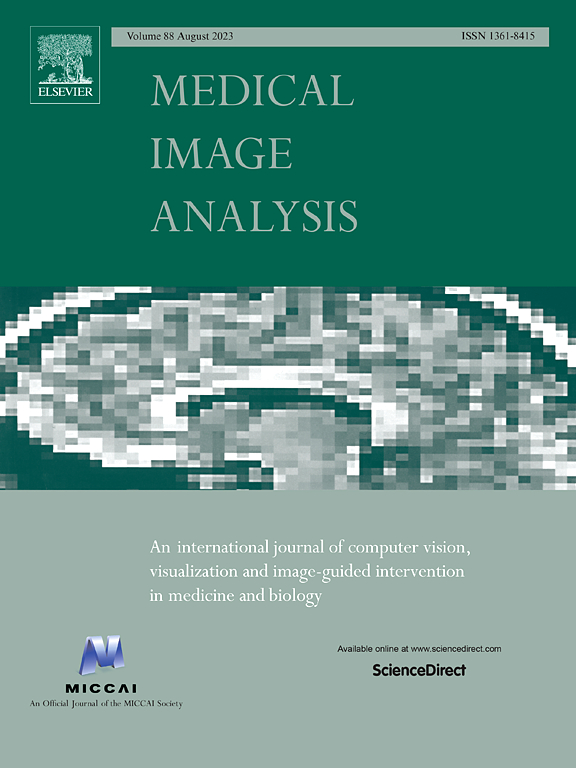Style mixup enhanced disentanglement learning for unsupervised domain adaptation in medical image segmentation
IF 10.7
1区 医学
Q1 COMPUTER SCIENCE, ARTIFICIAL INTELLIGENCE
引用次数: 0
Abstract
Unsupervised domain adaptation (UDA) has shown impressive performance by improving the generalizability of the model to tackle the domain shift problem for cross-modality medical segmentation. However, most of the existing UDA approaches depend on high-quality image translation with diversity constraints to explicitly augment the potential data diversity, which is hard to ensure semantic consistency and capture domain-invariant representation. In this paper, free of image translation and diversity constraints, we propose a novel Style Mixup Enhanced Disentanglement Learning (SMEDL) for UDA medical image segmentation to further improve domain generalization and enhance domain-invariant learning ability. Firstly, our method adopts disentangled style mixup to implicitly generate style-mixed domains with diverse styles in the feature space through a convex combination of disentangled style factors, which can effectively improve the model generalization. Meanwhile, we further introduce pixel-wise consistency regularization to ensure the effectiveness of style-mixed domains and provide domain consistency guidance. Secondly, we introduce dual-level domain-invariant learning, including intra-domain contrastive learning and inter-domain adversarial learning to mine the underlying domain-invariant representation under both intra- and inter-domain variations. We have conducted comprehensive experiments to evaluate our method on two public cardiac datasets and one brain dataset. Experimental results demonstrate that our proposed method achieves superior performance compared to the state-of-the-art methods for UDA medical image segmentation.
求助全文
约1分钟内获得全文
求助全文
来源期刊

Medical image analysis
工程技术-工程:生物医学
CiteScore
22.10
自引率
6.40%
发文量
309
审稿时长
6.6 months
期刊介绍:
Medical Image Analysis serves as a platform for sharing new research findings in the realm of medical and biological image analysis, with a focus on applications of computer vision, virtual reality, and robotics to biomedical imaging challenges. The journal prioritizes the publication of high-quality, original papers contributing to the fundamental science of processing, analyzing, and utilizing medical and biological images. It welcomes approaches utilizing biomedical image datasets across all spatial scales, from molecular/cellular imaging to tissue/organ imaging.
 求助内容:
求助内容: 应助结果提醒方式:
应助结果提醒方式:


